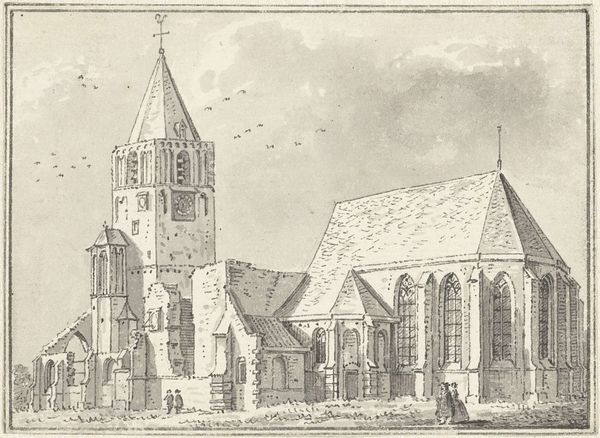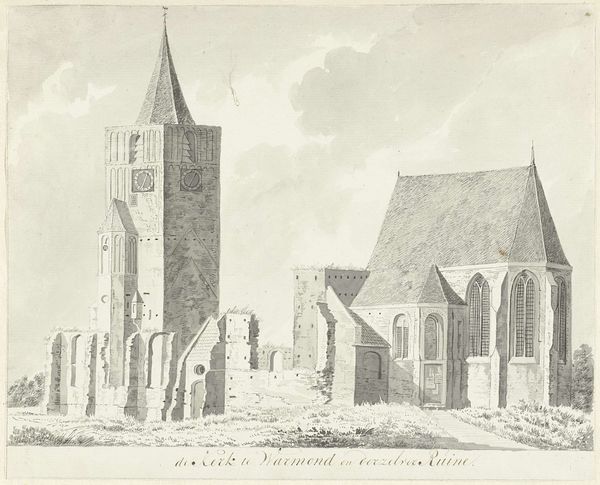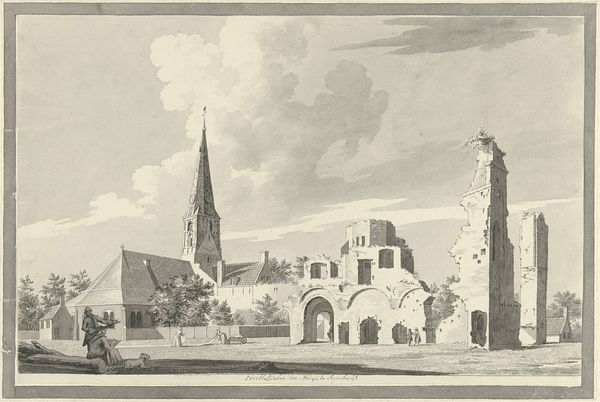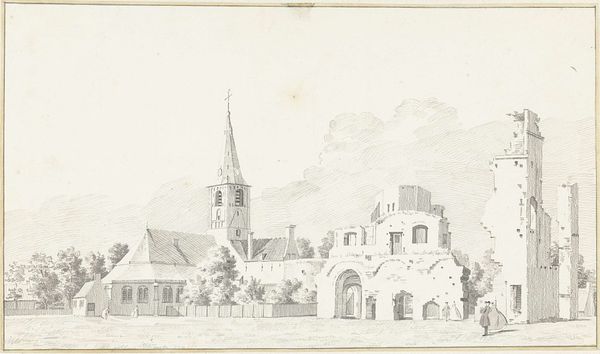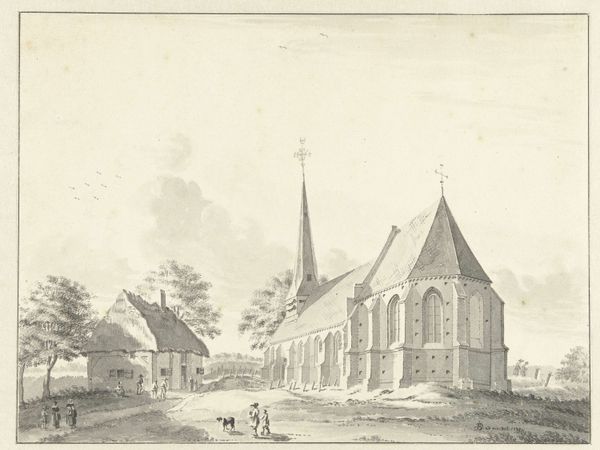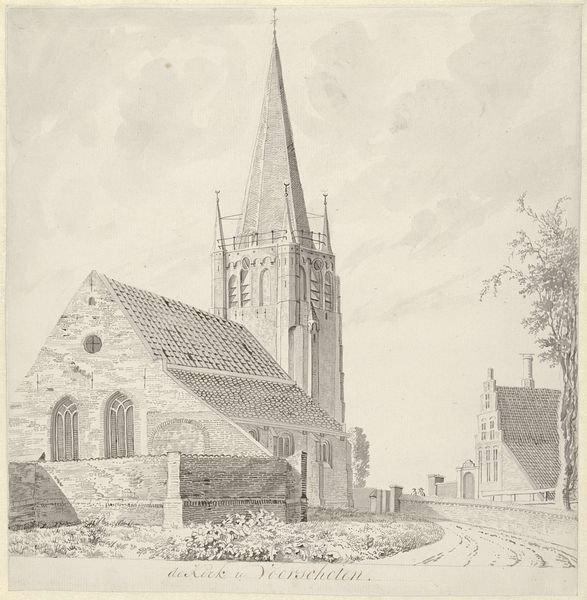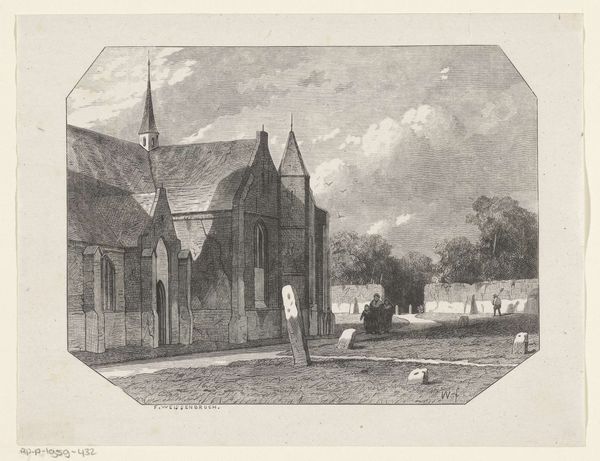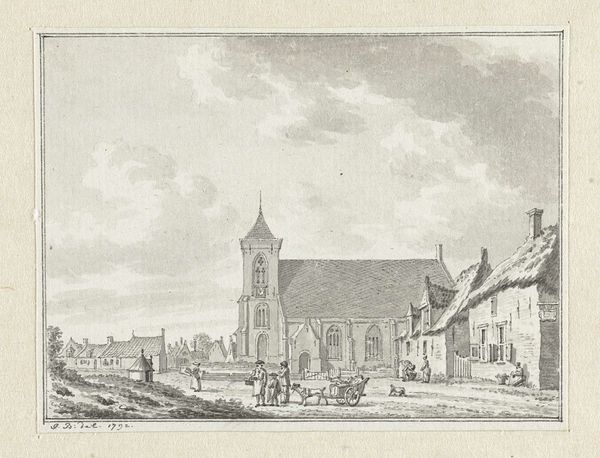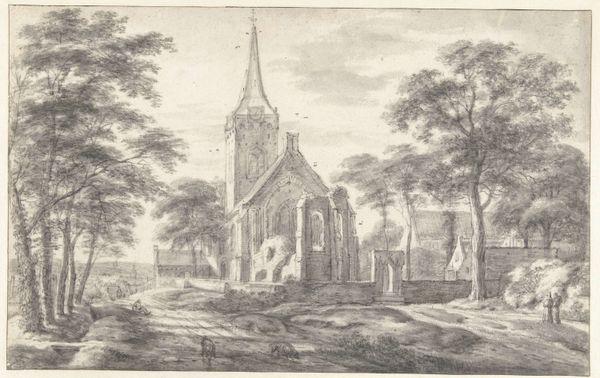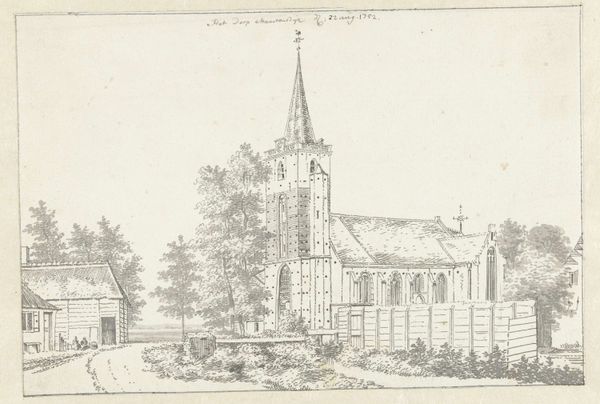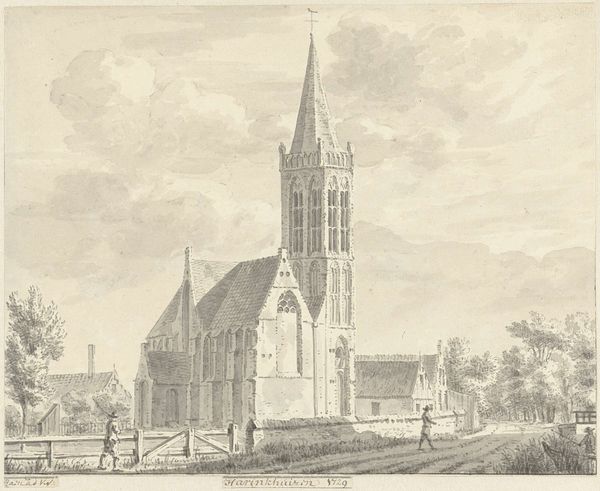
drawing, tempera, ink, architecture
#
architectural sketch
#
landscape illustration sketch
#
drawing
#
aged paper
#
toned paper
#
tempera
#
dutch-golden-age
#
pencil sketch
#
landscape
#
personal sketchbook
#
ink
#
pen-ink sketch
#
sketchbook drawing
#
cityscape
#
storyboard and sketchbook work
#
sketchbook art
#
architecture
Dimensions: height 117 mm, width 173 mm
Copyright: Rijks Museum: Open Domain
Curator: Here we have a drawing by Abraham Rademaker, titled "Kerk te Heiloo," created sometime between 1685 and 1735. It's rendered in ink and tempera on toned paper. Editor: Oh, I adore this! It has a wonderfully melancholic air about it, like a forgotten memory. The crumbling facade juxtaposed with the sturdy, spire-topped structure evokes such a bittersweet feeling. Curator: Absolutely. What I find fascinating is Rademaker's choice of materials. The use of ink and tempera, especially on toned paper, suggests an interest in creating a specific mood, emphasizing the play of light and shadow. The paper itself becomes an active part of the composition. It’s less about documentation and more about creating an atmosphere. Editor: Precisely! The toned paper lends it an immediate sense of antiquity, almost as if we are looking at an artifact that has withstood time alongside the architecture. One can almost feel the rough texture of the old paper, like running your fingers across the wrinkles of history itself. It invites introspection, doesn't it? The use of drawing in architectural renderings opens up conversations about high and low art in early modern Europe. Curator: Yes, indeed. The Dutch Golden Age was such an exciting period. Rademaker wasn't just depicting a church; he was actively engaged with the production and consumption of imagery and ideas. I wonder about the social function of a work like this, whether it served as a historical record, a picturesque scene for collectors, or even a means of personal artistic expression. These architectural drawings can shed light on artistic skill and labour in early modern Europe. Editor: I like to think it was all those things and more. Art always holds multiple layers of meaning, right? Imagine Rademaker sketching this on location, feeling the breeze, hearing the distant sounds of village life, infusing his observations and perceptions into the materials at his disposal. We can feel all the decisions, and a subtle emotive state. The sketch's lines convey his lived experience and translate an authentic vision of a particular time and place. Curator: Agreed. Considering the period, understanding the economic context in which the church itself was built adds further nuance. How did social forces determine its architecture, the choice of materials, and its very survival – or in this case, partial decay? The image also raises questions of what society chooses to preserve, or what survives despite it all. Editor: Indeed. The ruin element is fascinating. Perhaps Rademaker wished us to ponder resilience as much as destruction. Now that's something worth spending some time with. Curator: I agree completely. Considering the time, place, material production and emotive responses certainly reveals what an engrossing sketch this is.
Comments
No comments
Be the first to comment and join the conversation on the ultimate creative platform.
